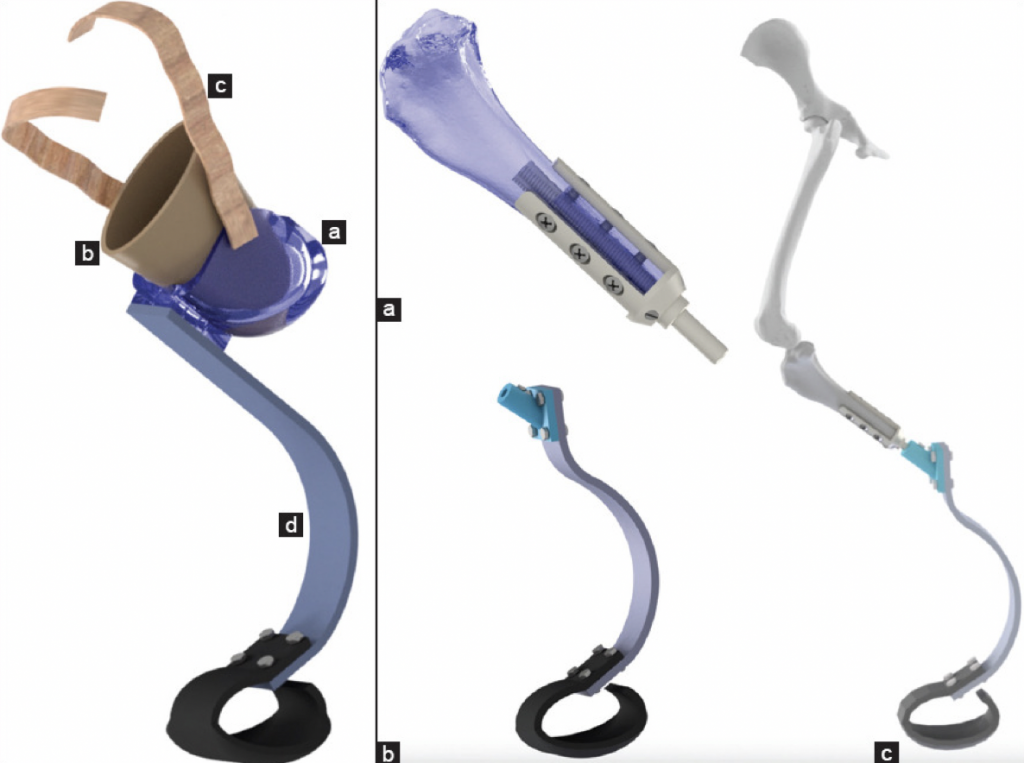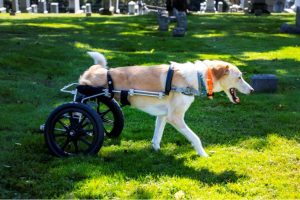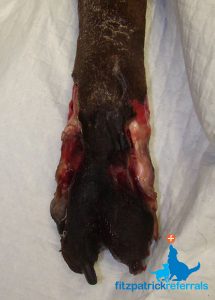When considering prosthetics, our minds often gravitate towards their application in human medicine. Yet, what about our beloved canine companions? Yes, dogs receive prosthetic limbs too! Although dogs with an amputation can continue to lead fulfilling lives, relying solely on their remaining limbs over time can lead to problems such as Osteoarthritis. This is where canine prosthetics come into play, offering a solution to enhance their mobility and overall well-being.
Canine amputation
The most common causes for canine amputations include: Neoplasia, severe trauma, ischemic necrosis, and in most cases osteosarcoma which affects over ten-thousand dogs each year in the United States, and the amputation of limbs is widely accepted as the preferred treatment in canines.
Where amputation becomes the only viable option to preserve the animal’s life, prosthetics offer a crucial alternative to euthanasia. Beyond just saving the life of the dog, prosthetics also serve to prevent additional deterioration of existing joints, boost exercise and activity levels and enable an improved execution of daily life activities.
Canine prosthetics
Canine prosthetics draw inspiration from human prosthetic technology. Just as with human prosthetics, crafting a limb for a dog demands meticulous attention to materials, design and alignment to ensure it meets it’s functional needs. Analyzing the way dogs walk, run, and jump allows us to create a limb that distributes weight correctly and provides adequate shock absorption, minimizing impact on the body. Similar to humans adjusting to limb prosthetics, dogs also require time to adapt, necessitating regular vet check-ups to ensure the prosthetic is well-suited and the dog is adjusting adequately.
While researching this topic I discovered that most canine limb prostheses can be classified in two types- Exo-prosthesis and Endo-exo prosthesis:

Left – A canine limb exo-prosthesis consisting of four elements: socket (a), a liner (b), a suspension system (c), and a shock-absorbing pylon (d).
Right – A canine endo-exo prosthesis that involves attaching an exo-prosthesis (b) directly to the remaining bone in the amputated limb (a) via Osseointegration.
Common complications are manageable and include pressure sores which can be alleviated by providing padding near the affected area. Additionally, in cases where the dog underwent surgery to install it’s prosthesis infections can occur after surgery but are treatable with antibiotics. Although manageable, smaller dog breeds may face heightened complications. This surprised me as I did not think that dog breeds would be an individual factor that would affect the outcome. To address this, smaller breeds often opt for lighter metal, such as aluminum, for thier prosthetics to mitigate potential challenges.

For dogs with hind leg amputations, dog wheelchairs present an alternative, more economical option. These wheelchairs offer support to amputee pets, aiding in balance and relieving weight on remaining limbs. Although in my perspective, dog wheelchairs carry limitations absent in prosthetic legs, rendering them outdated. They occupy space and can potentially hinder a dog’s natural mobility. Additionally, wheelchairs necessitate supervision and aren’t engineered for extended, unsupervised use. In contrast, prosthetic legs provide a sustainable, adaptable solution to address canine mobility impediments thus I feel like this is where funding and resources should go towards.
It could be argued that the resources and funding allocated towards enhancing technology for dog prosthetics could be redirected towards advancing human prosthetic technology. However, upon careful consideration, it becomes evident that investing in canine prosthetics holds substantial value. Not only do dogs play vital roles in many people’s lives as companions and service animals, but the innovations made in veterinary medicine may potentially pave the way for advancements in human medicine as well.

Very well written, with an excellent format and images. You’ve included interesting statistics and related it to personal ideas which…
This is a very well written blog, the format is as if you are talking directly to me. The ideas…
Love the Batman GIF :)
This is an excellent, well written blog. The narrative is engaging and easy to follow. It could be improved by…
This is a well-communicated blog. The it is written well with good use of multimedia. It could be improved with…